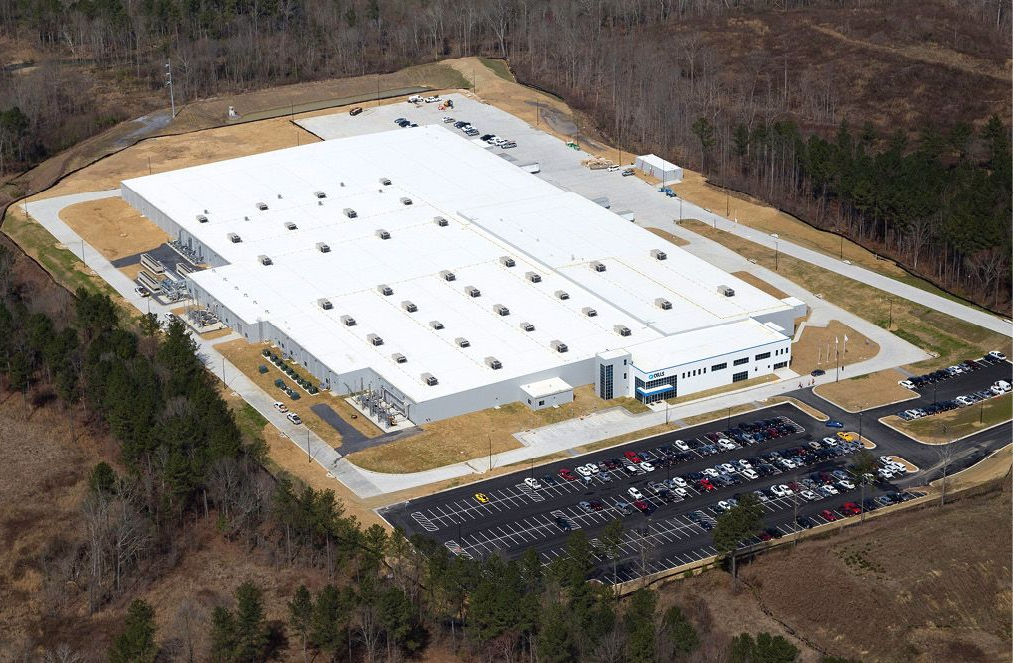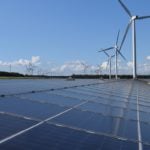Latest
Features , Guest Blog , Long Reads
The latest Trinasolar module has an output of 808W. Image: Trina Solar.
Leading Chinese module manufacturer Trinasolar has developed an 808W solar module that uses perovskite/silicon tandem solar cells.
The module, which uses 210mmx105mm cells and covers 3.1 square metres, has been certified by German testing and inspection body TÜV SÜD. While the company did not specify the module’s conversion efficiency, its power output exceeds that of a number of the company’s other products, including its Vertex N series of modules, which have an output as high as 725W, and a conversion efficiency of 23.2%.
This article requires Premium Subscription Basic (FREE) Subscription
Unlock unlimited access for 12 whole months of distinctive global analysis
Photovoltaics International is now included.
Regular insight and analysis of the industry’s biggest developments
In-depth interviews with the industry’s leading figures
Unlimited digital access to the PV Tech Power journal catalogue
Unlimited digital access to the Photovoltaics International journal catalogue
Access to more than 1,000 technical papers
Discounts on Solar Media’s portfolio of events, in-person and virtual
Or continue reading this article for free
“This is a monumental breakthrough for perovskite/silicon tandem solar modules and a key milestone in PV technology,” said Trinasolar chairman and CEO Gao Jifan, as the company’s latest module builds on growing interest in the perovskite space.
In January, Germany’s Fraunhofer Institute for Solar Energy Systems (ISE) and UK-based Oxford PV developed a 421MW module using perovskite/silicon cells, with a conversion efficiency of 25%. Separately, Chinese manufacturer Jinko Solar developed a perovskite/silicon cell using tunnel oxide passivated contact (TOPCon) technology with a conversion efficiency of 33.84%.
Higher conversion efficiencies are a key benefit of perovskite cells, with both Oxford PV and Trinasolar noting that the theoretical upper limit of perovskite cells, when used in tandem with silicon cells, is 43%, a significantly higher efficiency figure than has been reported in any modules currently in commercial production.
However, scaling up perovskite technology, and ensuring stability at commercial scales, remain a challenge, according to Oxford PV deputy CTO Ed Crossland, who spoke to PV Tech Power earlier this year.
San Francisco Bay Area, USA
PV Tech has been running an annual PV CellTech Conference since 2016. PV CellTech USA, on 7-8 October 2025 is our third PV CellTech conference dedicated to the U.S. manufacturing sector. The events in 2023 and 2024 were a sell out success and 2025 will once again gather the key stakeholders from PV manufacturing, equipment/materials, policy-making and strategy, capital equipment investment and all interested downstream channels and third-party entities. The goal is simple: to map out PV manufacturing in the U.S. out to 2030 and beyond.
Understanding PV module supply to the European market in 2026. PV ModuleTech Europe 2025 is a two-day conference that tackles these challenges directly, with an agenda that addresses all aspects of module supplier selection; product availability, technology offerings, traceability of supply-chain, factory auditing, module testing and reliability, and company bankability.
The conference will gather the key stakeholders from PV manufacturing, equipment/materials, policy-making and strategy, capital equipment investment and all interested downstream channels and third-party entities. The goal is simple: to map out PV manufacturing out to 2030 and beyond.
Read Next
Waaree Energies has commissioned a 5.4GW cell manufacturing facility in Gujarat, the largest cell manufacturing facility in India.
NHPC India has launched a tender for solar-plus-storage projects, aiming to secure 1.2GW of solar capacity and 600MW/2,400MWh of storage.
Toyo Solar plans to double its annual solar PV cell production capacity in Ethiopia, East Africa.
JinkoSolar shipped a record 99.6GW of products in 2024, but its operations delivered losses for the first time in the last five years.
The world added 451.9GW of new solar capacity in 2024, accounting for three-quarters of all new renewable power capacity commissioned last year.
Goldi Solar tells PV Tech Premium that plans to scale up operations from 3GW to 14GW would not have been possible without using AI.
Subscribe to Newsletter
Most Read
Upcoming Events
Media Partners , Solar Media Events
Media Partners , Solar Media Events
https://www.pv-tech.org/trinasolar-develops-808w-module-perovskite-silicon-tandem-cells/




